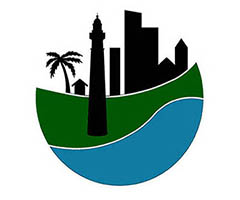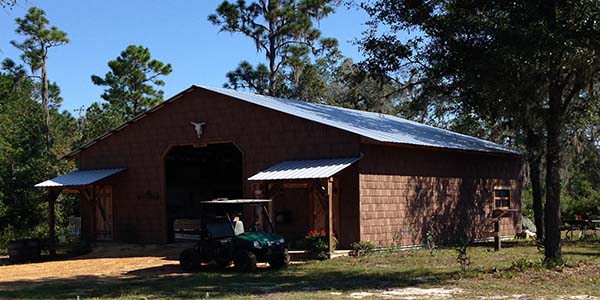Bruner Rd. Brownfield Designation - Volusia County, FL
This project is one in which MetaWorld is assisting their clients in cleaning up a site that has been documented as an illegal Construction and Demolition Landfill, beginning with getting the site designation as a Brownfield.
The troubling history of the site is unfortunate to the area, as an illegal C&D Landfill means that potentially hazardous materials may have been dumped there, without the site have been permitted as a site that is properly prepared to contain contaminants. The site is also surrounded by residential sub-divisions and borders the City well fields. It is imperative that this site gets cleaned up as soon as possible.
Being designated as a Brownfield makes it eligible for grant funding and tax benefits in order to clean-up the site, and therefore is the only reasonable way for private land owners to clean up a site of this nature. This designation has to come from Volusia County, who has only designated one Brownfield before. MetaWorld is proud to be on the forefront of environmentally responsible development techniques in Volusia County.
The project is currently in the application review phase, and will be scheduled for a Public Information Meeting after being presented at County Council.
A Place for Your Stuff - South Daytona, FL
This project was one in which MetaWorld assisted their client in permitting a system that would alleviate flooding on the site. The site had a permit from the St. John’s River Water Management District (SJRWMD) that was nearly 30 years old. Throughout the years, the drainage characteristics of the site had changed because Nova Road had been expanded and because the Nova and Reed Canals had undergone modifications. One of those modifications involved Reed Canal along the property boundaries, and a berm was created which turned the site into a “bowl”, and made it susceptible to flooding.
We designed a permanent pump system that would kick in before flooding would occur. This required modifying an existing permit with SJRWMD and updating the system such that the flow of stormwater run-off met current standards. Although bringing an existing site to current standards without modifying the pond itself is a difficult task, MetaWorld got the job done.
Shipping Container Barn - Interlachen, FL
This project was for a private client who had wanted to incorporate shipping containers they already owned into the design of their new barn. It was an incredibly fun project for our team to work on, given the passion we have for sustainable development.
Our design involved using the shipping containers for both logistical and structural purposes. The containers significantly reduced the material costs of the project because the weight and structural integrity of the containers allowed them to be used for the anchorage of the barn, reducing the need for large footings, deep pilings and structural walls. The trusses were connected to supporting legs which were fastened to the containers.
With our innovative design, we were able to incorporate the shipping containers as the barn stalls on both sides, allowing for a large open barn space inbetween. Additionally, our design allowed for storage area above the shipping containers, offering more space than your conventional barn.
At the end of the day, our clients were very pleased with their more spacious and less expensive barn. Not only that, but we were also able to recycle large amounts of material without requiring any processing. This was certainly a win-win project.
Ground Mounted Solar System - Pearson, FL
This was an exciting project where MetaWorld Civil Consulting, LLC had the opportunity to move towards our long term goals of benefitting our local communities and enhancing our quality of life. Additionally, this was the first solar project permitted by our new company, adding to the fervor.
This particular installation was for a 2.5 kW ground mounted array on a Farm in Volusia County, Florida. The client in this case was particularly concerned about the aesthetic effect that the array would have on their property, and wanted to use a ground mounted system that did not include the typical pole and rack system used for ground mount installations.
As the Engineer of Record, we were able to design an innovative system which would provide maximum efficiency while being no taller than the existing fencing, and meeting the clients aesthetic requirements.
The system is up and running and the client is enjoying their free energy. Additionally, the back-up battery system installed provided the client with power during the recent Volusia County outages.
Irrigation Season Water Balance - Central Utah
Since 1987, MetaWorld Civil's staff has been contracted by the Utah Power Company to consult them regarding the most efficient and environmentally sustainable use of their saline wastewater. Saline wastewater is a by-product of coal power plants. If this wastewater is not effectively managed, it could contaminate water supplies and destroy agricultural fields. Proper management requires consistent monitoring and effective application of the wastewater.
Our staff was responsible for prescribing the distribution of saline wastewater (a by-product of coal power plants), monitoring the effects on the soil and groundwater, and updating application methods as necessary. Seemingly simple, this task is incredibley complex. If the wastewater sits too long in a detention pond, it begins to contaminate the soil and eventually reaches the groundwater. If it is distributed too quickly, the results could be contamination elsewhere, or the killing of crops if used for irrigation. The complexity of managing the wastewater included not only preserving soil and water both where the wastewater was stored and where it was distributed, it also involved determining the proper crops that could be harvested using saline wastewater without negative impacts resultant from the use of said crops.
It was determined that if distributed properly, saline wastewater could be used to irrigate and cultivate alfalfa, which could be used to feed cattle without negative impacts to the plant,soil or animal; due to alfalfa's natural ability to break down the waste. The fact that the monitoring and distribution of this wastewater has been the responsibility our staff members for about two and a half decades attest to our knowledge and effectiveness in sustainable development.
Wind and Solar Energy Harvesting Grant - Central Utah
This grant was a $775,000 grant entitled "Atmosperic surface layer turbulence and environmental science test facility." It was funded by the National Science Foundation, Utah State University, the University of Utah and Dugway Proving Ground. MetaWorld Civil staff served as the Primary Investigator for this research grant.
Among the objectives of this project were harvesting of solar and wind energies. Analysis of the incoming solar radiation at the playa shows, on the average, about 19.6 MJ m-2 d-1 solar energy throughout the 397 days of the experiment. Assuming that only one third of this energy can be available using photovoltaic solar cells, we have about 6.5 MJ m-2 d-1 = 1.5 * 102 J m-2 s-1 (Watt) = 5.4*102 kWh from each solar collector (average day length = 12 h). This available energy is higher during summer and lower during winter.
Unlike solar power, wind power is not restricted to daytime generation of energy. Our study of wind data over the playa showed that the calm conditions occurred only about 3 % of the time throughout the experimental period of one full year. A single wind turbine with an efficiency of 40 % and R = 10 m (installed at 20 m), and U20 = 4.6 m s-1 (average wind speed in playa at 20 m) would yield about 6.1 * 103 W = 2.2 * 104 kWh. The maximum (gust) wind speed of 25.5 m s-1 occurred around 1900 local time on 19 March 2000. To prevent destruction of the turbine in winds greater than 10 m s-1, the blade can be designed to gradually feather (reduce their angle of attack) as wind speed increases.
The combination of solar and wind energies is a promising approach to alleviate current energy demands. Our study showed that the Great Basin playa could be a suitable area to harvest renewable solar and wind energies. This research project has set the stage for future feasibility studies of the area, and could lead to great leaps forward in sustainable development.







